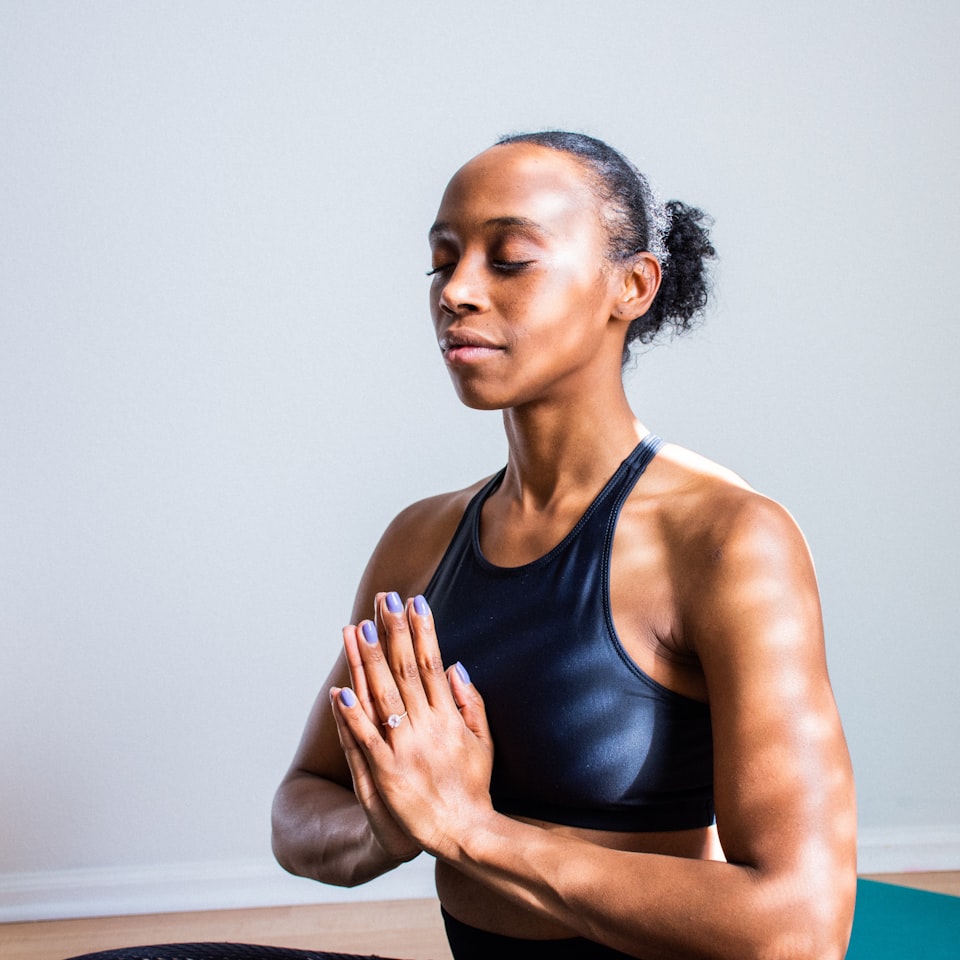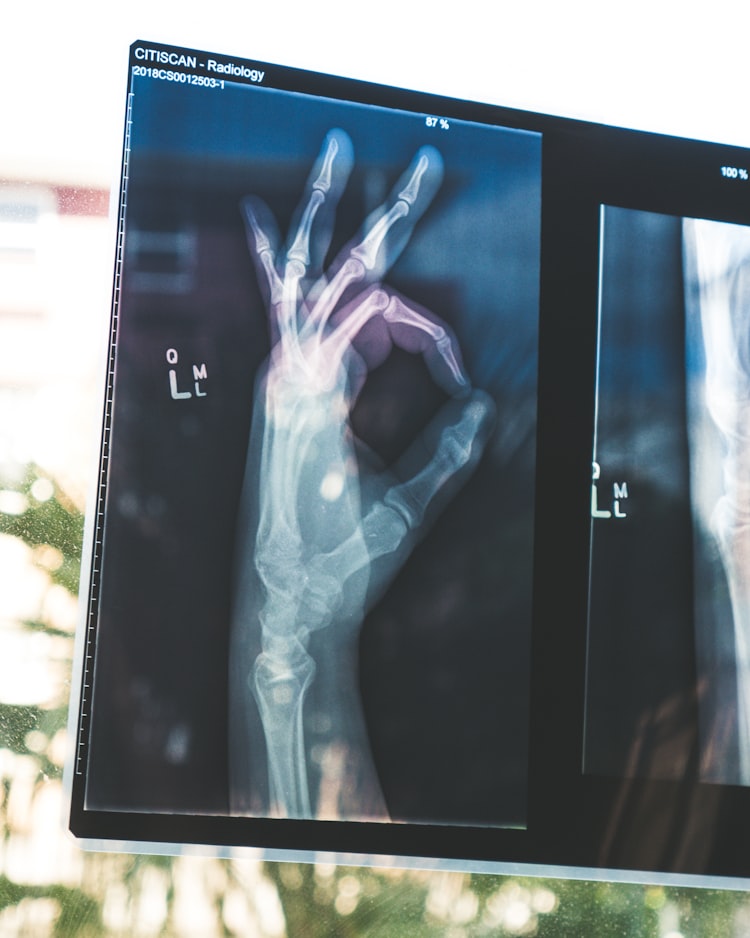A Deep Dive Into the Prana Vayus

Understanding the Five Sub-Doshas of Vata and Their Correlation to Breathwork, Mudra and Ultimately Longevity

Introduction
Ayurveda recognizes the following elements (in order from subtle to gross): Ether, Air, Fire, Water, Earth. These are referred to as the five great elements or panca maha bhutas. These elements are present within every living organism, from the most minute grain of sand to the complexity of a human being. Through time, these elements joined together, building upon each other to form more and more complex creations. Everything in our universe is a result of the five elements. A brief introduction to each element can be found below:
Ether
Ether is space. Without it, nothing would exist. Ether is the first expression of consciousness. Ether is movement without resistance or direction, freedom, vibration. Ether is clear, light and subtle. This can be represented in the mind as open-mindedness, expansive thought, and creativity. This is seen in the body as all of the spaces in the body, like the body cavities. Eventually, there was directional movement, which gave way to Air.
Air
Air is responsible for directional movement. The air element governs all sensory and motor movements. Air is movement with purpose or direction. Air is dry, moving, light, clear, rough, and cold. This shows in the mind as consciousness and thoughts. This is present in the body as the movement within the body like blinking or breathing. Eventually, there was friction, which gave way to Fire.
Fire
Fire is responsible for heat. Fire is luminous, penetrating, and heating. Fire is hot, sharp, light, dry, and subtle. This shows in the mind as focus, concentration, the fire of understanding. This is present in the body as digestion, body temperature and metabolism. The intense flame of fire eventually gave way to liquid or water.
Water
Water is responsible for everything liquid. Water is cohesive and cleansing. Water is cool, soft, dull, and slimy. Water in the mind can be seen in the emotions. This shows in the body as all bodily fluids. Eventually, there was freezing, which gave way to Earth.
Earth
Earth is responsible for structure. The earth element is hard structures. Earth is the gravitational pull. The earth element is heavy, solid, dense, stable, hard, dull, and gross (as in material versus subtle). In the mind, this is seen as the crystallization of emotions. This shows in the body as all of the solid tissues ie bones and tendons.
These elements also come together to form the three doshas: vata, pitta, and kapha. Ether and air join together to form vata. Fire and water join together to form pitta. Water and earth join together to form kapha.
Vata is represented by the dry, light, cold, rough, subtle, mobile and clear qualities, the qualities of ether and space. Due to this combination, vata can be understood as movement. It governs all movement within the human body. Anything that moves is a function of vata. Additionally, each dosha has 5 sub-doshas. The subdoshas of vata are: prana, udana, samana, apana, vyana. Vata and its subtypes, also known as the prana vayus, are the focus of this research.
It is important to have a basic understanding of each element and the associated qualities, or gunas, because as we see simple creations becoming more complex through the combination of elements. We can also see the increase in complexity as the topic becomes more elusive. However, having this basic understanding will allow for high level, simple thought that transcends more seemingly complex topics.
Sub-Doshas of Vata
As previously mentioned, there are five sub-doshas of vata. As vata governs movement, each subtype has its own distinct movement and with it, a particular function. The elements are also seen in each subtype and so the correlation between the element and the gunas can be made.

Prana
Prana is closely connected to the ether element. Its site is in the head. Its function is to fill the space. It is responsible for the intake of nutrients. The movement of prana is downard.
Prana is many things. It is inhalation, the movement of thoughts, perception, awareness. It governs our intuition and is the ability to know beyond the five senses. Prana is everything we take in. Prana can be represented in the following flow:
- Being human we are gifted with awareness
- Through this ability, we then can perceive the world around us
- Perception lends itself to sensation
- With sensing comes the ability to feel and have feelings
- From our feelings we then think and have thoughts
- Which ultimately leads to emotions
Prana disorders include heart palpitations, breathlessness, anxiety, stroke, paralysis, sleep apnea, bronchitis, asthma and pneumonia.
Udana
Udana is closely connected to the air element. Its site is in the diaphragm. Udana is represented by upward moving energy. Udana travels from the diaphragm up to the brain. Udana is also seen as exhalation, in the stimulation of memory, expression and speech. Udana is positive energy which allows for the evolution of our consciousness. Udana is our motivation to evolve, grow and expand.
Udana disorders include stuttering and difficulties with speech, poor memory, lack of direction, and bronchial conditions.
Samana
Samana is closely connected to the fire element. Samana is intimately connected with agni due to its location and function. Its site is the small intestine and navel. Its function is to split and separate. It governs digestion, absorption and assimilation. It is the balancing air and moves in a linear manner. It is the steadiness to face what needs transformation, both of food and experiences.
Samana disorders include indigestion, bloating, lack of absorption, poor digestion. Additional imbalances include the emotions of fear, self-doubt, lack of confidence and balance.
Vyana
Vyana is circulation and thus can be connected to the heart and the entire body. Its function is pulsation and throbbing. Vyana is closely connected to the water element. It is the movement and energy of distribution within the body and has the responsibility of working as a communication hub.
Vyana disorders are all conditions caused by poor circulation - lack of oxygenation to organs, clogged arteries, and ultimately heart disease. Additional disturbances to vyana are joint issues, spaciness, exhaustion, feeling of loneliness due to isolation or disconnection.
Apana
Apana is closely connected to the earth element. It is the movement of downward and outward action. Due to its location (and site of the colon) the direction of movement is present in menstruation, urination, defecation, birth and moving the baby through the birth canal. David Frawley states: “On a deeper level, apana rules the elimination of negative sensory, emotional and mental experiences. It is the basis of our immune functions on all levels.”
Apana disorders include constipation or diarrhea, no or heavy menstruation, painful menstruation, pain during intercourse and back pain. Derangement of apana is the inability to release.
The concept of subdoshas can be tricky to conceptualize because there is generally nothing to physically see. Vata and its subdoshas are all about movement. Moving things in, through and out of the body. The subdoshas listed above have many more roles within the body but for this scope of research, the focus will remain on the breath.
Defining Prana and Pranayama
Prana is often referred to as the "life force". It is breath. And, iit is so much more than that. Visibly, we can see the rise and fall of the chest with inhalation and exhalation. In a less obvious aspect, it is the energy which flows in various body channels. Prana alone is responsible for our aliveness.

Within the air element there is movement, expansion and pulsation. These inherent qualities are also seen within the sperm and ovum. It is this throbbing movement that creates and supports life well before the first breath following birth. “Even when the nostrils are not operative and the lungs are dormant, amniotic fluid, charges with pranic ions from the mother, flows into the lungs and through the umbilical cord; thus prana functions inside the womb.” (2) Once the baby travels through and out of the birth canal, it is the first breath, the first cry that expands the lungs and starts the individuals life Earth-side. At the time of first breath, the baby’s prakriti is established and life begins. According to the scriptures of Swara Yoga, Shiva Swarodaya and Gyana Swarodaya, the lifespan of a man is measured not in years but in number of breaths. At the rate of 15 breaths per minute, a human life is comprised of a total of 946,080,000 breaths - a full 120 years. (2)
The presence of breath is life.
The absence of breath is death.
Because of this direct correlation to life and death it is of utmost importance to control prana, through pranayama (which will be defined below). Prana is responsible for good health as every part of the body requires the process of oxygenation to survive. When our Prana diminishes, sickness sets in; and when we have plenty of Prana, every part of the body is in perfect health. If we have an excess of Prana, it can be transmitted to others for healing or magnetism. (1)
Pranayama is defined by Dr. Vasant Lad as “the control of life-energy by various techniques that regulate and restrain breath, helping one to control the mind and improve the quality of awareness and perception.” There are various types of pranayama practices all which have different techniques to achieve different results. The techniques can be cleansing, energizing, calming, centering, and the list of effects can continue. All of these practices allow for a greater movement or flow of prana throughout the body.
It is also important to note the functionality between both right and left nostrils. The right nostril is solar, heating and often associated with masculinity. The left nostril is lunar, cooling, and associated with the feminine.
Connecting the Vayus to Breath
The subdoshas of vata tend to be more of a difficult concept to grasp. Pitta can be seen as acidity in the stomach, among other things. Kapha can be seen as the structure of the body. But vata is mostly unseen. It is the movement that brings the food into the stomach and the movement of the physical body. It is the movement that keeps the body alive and functioning. On this subtle level, one can interchange subdoshas of vata for the prana vayus or forces of air. Since there are five elements it is only natural that there are five primary patterns in which prana moves. Outlined below are the five vayus.
Prana
Type of Breath: Energizing
Part of Breath: Inhalation, particularly the beginning of inhale
Movement of Energy: From head down to navel, inward - from outside of the body to inside
Breath Practice: Bhastrika - forceful inhalation and exhalation that is driven from the navel drawing toward the spine
Benefits: Clear obstructions in the respiratory system, strengthens nervous system, increase physical vitality and enhances clarity of mind
Subtle Level: Awakens kundalini
Contraindications: May aggravate pitta in excess, pregnancy, high blood pressure, glaucoma, hernia, heart issues
Additional Practices: Lengthening the breath, retaining inhale, bhastrika and ujjayi
Udana
Type of Breath: Ascending
Part of Breath: Exhalation, particularly the middle part of exhale
Movement of Energy: From navel up to head, upward
Breath Practice: Ujjayi pranayama - diaphragmatic breathing with a slight constriction to the back of the throat
Benefits: Improves immune function, spiritual awakening, cultivates feelings of bliss and divinity, manages anxiety, stabilize energy in the body
Contraindications: low blood pressure, heart conditions, constipation, fever, chronic fatigue
Additional Practices: Brahmari (bee breath), kapalabhati, simhasana (Lion’s breath)
Samana
Type of Breath: Expanding
Part of Breath: Retention/ Contraction, second part of inhale and pause
Movement of Energy: From the entire body back to the navel
Breath Practice: Surya bhedi - a combination of bhastika and nadi shodhanam, two forceful exhalations and inhalations out of one nostril and then the other
Benefits: Balances the flow of all vayus in the body thus supporting physical and mental health and spiritual awakening (13)
Contraindications: high blood pressure, vertigo, epilepsy, stomach and mouth ulcers
Additional Practices: nadi shodhana (alternate nostril breathing), ujjayi, retaining inhale, sama vritti (equal breathing), 3-part yogic breath
Vyana
Type of Breath: Descending
Part of Breath: Retention/Expansion, beginning of exhale
Movement of Energy: From the navel throughout the entire body
Breath Practice: Anuloma/ alternate nostril breathing . Dr. Lad states that during this practice: “Every bodily cell is activated and starts breathing”.
Benefits: balances intuition and intellect, cleanses all 72,000 nadis, balances feminine and masculine energy, good for all three doshas, governs our ability to expand and experience beyond our physical bodies
Contraindications: Generally seen as safe but those with any lung conditions should proceed with caution
Additional Practices: retention of inhale followed by lengthened exhale
Apana
Type of Breath: Centering
Part of Breath: Exhalation, particularly the end of exhale and the pause
Movement of Energy: From navel to root chakra, downward and outward
Breath Practice: Kapalabhati - forceful exhalation from the nose with focus on drawing the navel toward the spine, followed by a soft, passive inhalation.
Benefits: Kapha and vata disorders, improves memory, intelligence and sensory perception, tones digestive organs and improves agni and appetite.
Contraindications: glaucoma, migraine, headache, heart issues
Additional Practices: Lengthening and suspending exhale
Dr, Vasant Lad beautifully illustrated the importance of pranayama here: “Pranayama brings harmony between prana, the breath, emotions, and consciousness.” The practices outlined above can assist with moving the breath through the body in a purposeful direction. Anecdotally, as more human beings are suffering from unmanaged stress, depression and anxiety we are seeing a rise in all sorts of disorders. Many people are managing their symptoms with medications without truly taking a step back and observing the qualities of their breath. The quality of the breath has the power to shape and set the energetic mood of a person. We have all had an experience where we are stressed and holding our breath. If there is not that awareness, release of the breath and a change of focus to more optimal breathing patterns, like diaphragmatic breathing, then the dis-ease will continue to morph and wreak havoc on the body. Mindful breathing is the key to health and longevity.
Connecting the Vayus to Hasta Mudras
A hasta mudra, or seal, is made by bringing certain fingers together to touch. Each finger is associated with and has certain characteristics of an element. The thumb represents fire. It is associated with the stomach and the emotion of worry. The pointer, or index, finger represents air. It is associated with lungs, large intestine and the emotions of depression, sadness and grief. The middle finger represents ether. It is associated with heart, small intestine, circulatory and respiratory systems and emotions impatience and hastiness. The ring finger represents earth. It is associated with the liver, gallbladder, nervous system and the emotion of anger. The little, or pinky, finger represents water. It is associated with kidneys and the emotion of fear.

In general, to increase a particular element the thumb is pressed to the base of the corresponding finger. To decrease an element, the corresponding finger is folded at the base of the thumb and generally the back of the finger is pressed by the thumb. To balance an element, the tip of the thumb and tip of the corresponding finger are joined together. (6)
There is great power in our hands. Each hand contains about 100,000 nerves and each fingertip has about 3,000 nerve receptors, just under the surface of the skin. (3) This concentrated energy found at our fingertips has been confirmed by modern science. Studies have found that these nerve root endings on the tip of the finger have a concentration of free electrons. With a regular mudra practice, positive results can be felt as the mudra redirects the energy, or prana, back into the body. Additional benefits include aiding in proper blood circulation, enhancing immunity and eye sight, and advancing mental stamina.
Hand gestures can be made during meditation and asana practices to assist the flow of prana, stimulate the associated organ and calm the related emotion. As each element has its own unique gunas, each mudra will then aid in that particular effect and ultimately can adjust the flow of energy by affecting the certain element and promoting healing.
As a general rule, the following considerations should be made when creating a hasta mudra.
- Mudra should be done in a sitting posture. It can also be appropriate to hold an asana posture.
- The breath should be smooth and steady.
- Settle the mind by releasing any mental fluctuations. Anchor the mind to the mudra.
- Holding a mudra for a minimum of 2 minutes will have positive effects. A mudra can be held between 5-45 minutes for maximum effect.
- The pressure between the fingertips should be gentle.
- The hand should be relaxed.
Outlined below will be five simple hasta mudras. As we have seen, each element is associated with each vata subdosha, or vayu. Each subdosha is associated with a breath. And now, each mudra, which in turn will have those effects of the element, organ, breath and ultimately affect on overall health.
Prana Mudra
The prana mudra, also known at the mudra of life, is used to energize and bring a sense of vitality. Because of this energizing effect it can be used when there is a lack of motivation or depression. Additional benefits include: stimulating joy and perseverance, enhancing immunity and when struggling with mental tension, low endurance, anger and inflammatory disorders. It is also said to stimulate root chakra.
To practice the mudra, bring the pinky and ring finger to thumb finger. Allow the ring and middle fingers to be out stretched.

Udana Mudra
The udana mudra is used to improve respiratory functioning and communication. As udana has its seat in the throat, the connection between all diaphragmatic ailments and bringing ease can be made. Additional benefits induce enhancing creativity, boosting memory and brining a sense of mental clarity. It is also said to have a positive influence on the vocal cords.
To practice the mudra, bring the tip of your index, middle and ring fingers to touch the thumb. Allow the pinky finger to be stretched out.

Samana Mudra
Samana mudra is used to enkindle the digestive fire. It is said to increase metabolism and appetite and decrease any digestive upset. Additional benefits include, strengthening liver function and lowering blood pressure.
To practice the mudra bring all of the fingertips to touch the tip of the thumb.

Vyana Mudra
Vyana mudra is used to reduce vata symptoms. It can reduce feelings of anxiousness, improves mental strength and alleviates sleeplessness, back pain from vata conditions, hormone imbalance, aids with digestive issues like gas and bloating.
To practice the mudra, bring the index finger and middle finger to the tip of the thumb. The ring finger and pinky finger is out stretched.

Apana Mudra
Apana mudra is also referred to as the purification mudra. It is said to aid with all alignments affecting the lower half of the body. Limited studies have shown positive results in managing IBS, diabetes, and menstrual cramps. Additionally it clears toxins, promotes inner peace and harmony.
To practice the mudra, bring the middle and ring finger to the tip of the thumb finger. Allow the pointer and ring finger to be out stretched.

There are many hasta mudras. In most representations of Hindu deities, one can see these powerful gestures. Mudras were used by the Rishis for various rituals, to aid in relaxation and deep meditation. Today these mudras can be created to stimulate the benefits mentioned above. Ancient and modern science confirms this energy in our hands, if there is still doubt, try the practice for yourself and see what comes about.
Conclusion
Imbalance of the five elements in the body disrupts the immune system and is the root cause of most diseases. Balancing the elements and doshas inside of the body will bring a sense of nourishment, vitality and good health. A simple experiment was performed where a flight passenger waiting for their plane began to engage in “antsy” behavior. They started by tapping their foot, bouncing their leg and escalated to walking in circles in a furry, making aggressive and abrupt gestures with their hands and body. The other passengers at the terminal, who were all relatively calm, began to feel anxious, holding their breath and even joining in on the erratic movement.
This is the power of how we present ourselves, how we experience reality, how we navigate challenging situations, and how large of an impact one individual has on their surroundings. The breath has the power to create our reality. We can shape the vayus to shape the mind. We can empower the breath with hasta mudra practices and redirect that energy in a more intentional way. The best part is that these breath practices and mudras are free!
Anyone can improve their wellbeing by devoting just two minutes a day to any of the practices listed above. We are all in charge of our energy. We all have the power to shift our energy. We all deserve to live long, healthy and happy lives.
References
- Makwana, D. P. (2017). CONCEPT OF PRANA AND PRANA-VAYU WITH ITS CONTROLLING TECHNIQUE-PRANAYAM. PHARMA SCIENCE MONITOR AN INTERNATIONAL JOURNAL OF PHARMACEUTICAL SCIENCES.https://www.pharmasm.com/pdf_files/20170411011447_29_dhawal.pdf
- Breath, mind, and consciousness. (n.d.). Google Books. https://books.google.com/books?hl=en&lr=&id=WEog8awSoN4C&oi=fnd&pg=PP11&dq=Breath+practices+and+sanskrit+chants+&ots=Am6DgY4tSc&sig=fr_164vNG9te-i0NSvjOtIyBrT0#v=onepage&q&f=false
- Singh, K. & IJPESH. (2015). Hasta Mudra’s and respiratory system [Journal-article]. International Journal of Physical Education, Sports and Health, 1(6), 83–86. https://www.kheljournal.com/archives/2015/vol1issue6/PartB/1-6-5.pdf
- B. M. Bhavya, B. M. (2019). An Ayurvedic Understanding on Applications of Yogic Prana Mudra in Relation with Prana Vayu as a Supportive Measure during Coronavirus Disease 2019 Pandemic. Asian Pacifc Journal of Health Sciences. https://www.researchgate.net/profile/Bhavya-Bm-2/publication/360649935_An_Ayurvedic_Understanding_on_Applications_of_Yogic_Prana_Mudra_in_Relation_with_Prana_Vayu_as_a_Supportive_Measure_during_Coronavirus_Disease_2019_Pandemic/links/62da474b82bb4729929703e5/An-Ayurvedic-Understanding-on-Applications-of-Yogic-Prana-Mudra-in-Relation-with-Prana-Vayu-as-a-Supportive-Measure-during-Coronavirus-Disease-2019-Pandemic.pdf
- Pandey, S. & Prof. A. K. Garg. (2021). THE CONCEPT OF PRANA IN AYURVEDA. In World Journal of Pharmaceutical Research (Vol. 10, Issue 14, pp. 493–499) [Review Article]. https://doi.org/10.20959/wjpr202114-22310
- Nath, T. Yoga Mudras for Wellbeing and Emotional Healing [Powerpoint Presentation]. https://eoivienna.gov.in/?pdf8901?000
- (n.d.). Vayu Mudra - Steps, Benefits, and Complementary Practices. Https://www.Prana-Sutra.com/Post/Udana-Vayu-Mudra-Definition-How-To-And-Benefits. https://www.prana-sutra.com/post/udana-vayu-mudra-definition-how-to-and-benefits
- (n.d.). The Five Prana Vayus in Yoga. Https://Yogainternational.com/Article/View/The-5-Prana-Vayus-In-Yoga-Prana/#:~:Text=In%20particular%2C%20the%20vigorous%2C%20dynamic,and%20enhances%20clarity%20of%20mind. https://www.prana-sutra.com/post/udana-vayu-mudra-definition-how-to-and-benefits
- Singh, A. (2018). Physiological appraisal of prana vayu in ayurvedic literatures. International Journal of Physiology, Nutrition and Physical Education, 2157–2159. https://www.journalofsports.com/pdf/2018/vol3issue1/PartAL/3-1-467-739.pdf
- Lad, D. V. (2001). Textbook of Ayurveda, Vol. 1: Fundamental Principles of Ayurveda. Ayurvedic Press.
- Frawley, R. (1999). Yoga & Ayurveda: Self-Healing and Self-Realization. Ayurvedic Press.





